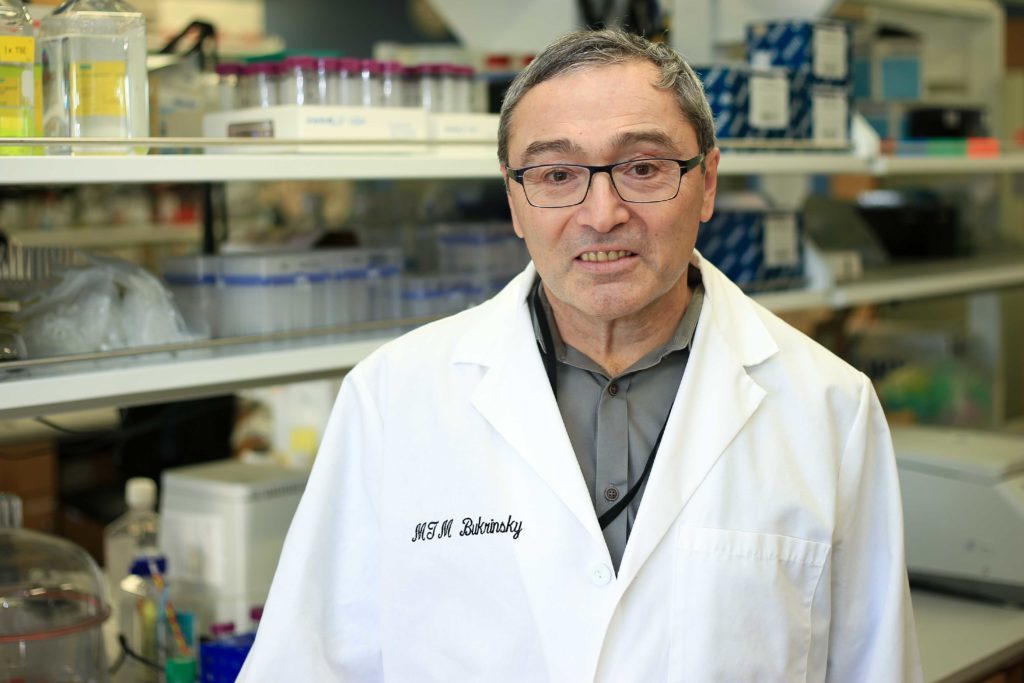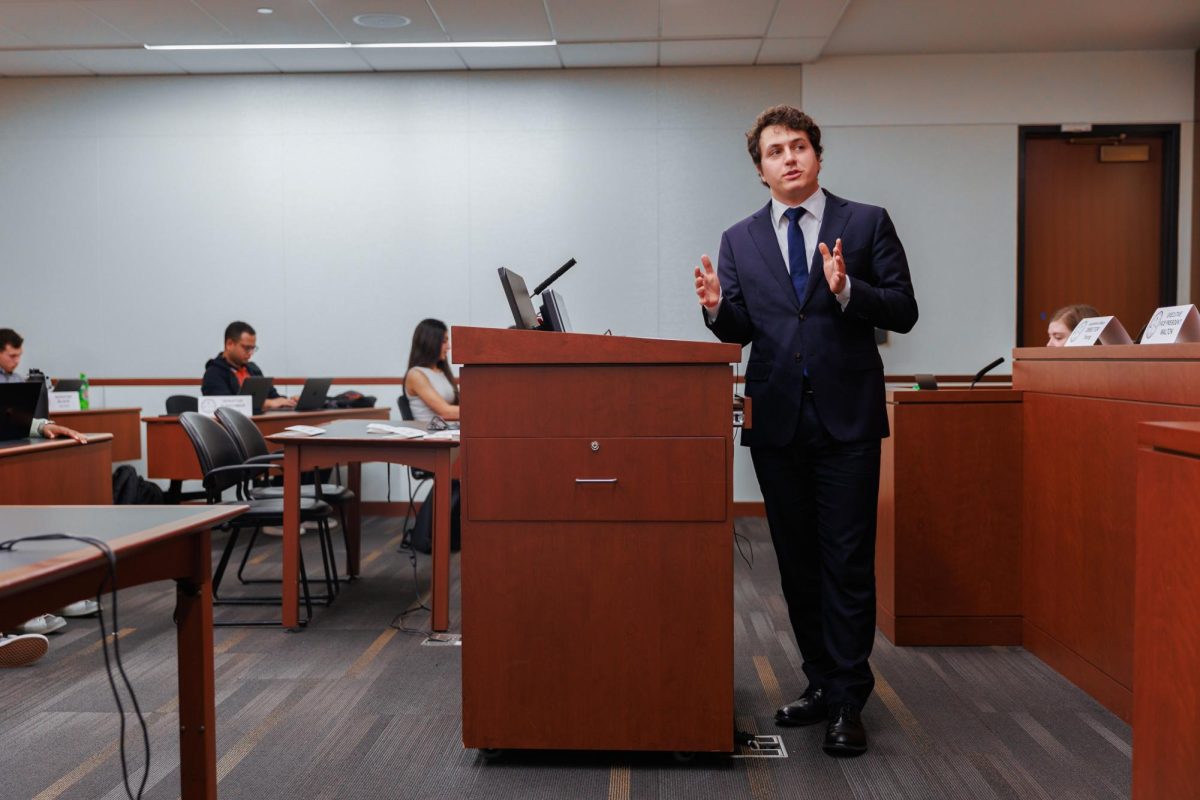Amid piles of papers and glass beakers tucked away on the sixth floor of Ross Hall, researcher Michael Bukrinsky and his team peer into microscopes as they work to find a cure for HIV.
Bukrinsky’s lab includes two separate rooms in the medical school’s main building where HIV samples are placed under fume hoods – large machines that analyze how the virus behaves. The results are scrutinized in a room next door.
Bukrinsky is one of more than 20 faculty who study HIV at GW, working on projects ranging from finding better avenues for treatment to directly seeking to develop a cure. Researchers said they hope their work with the disease can lead to lifesaving breakthroughs in a city where AIDS has long been a pressing public health crisis.
D.C. has one of the highest rates of HIV in the country. One in 13 adults living in the District are at risk of being exposed and diagnosed with the virus, according to a 2017 report from the Centers for Disease Control and Prevention, though new cases in the District have declined sharply in recent years.
In October, a group of public health researchers at GW conducted a study on HIV in the District, identifying 15 subtypes of the virus spreading in the D.C. community.
In 2016, the University received a $5.7 million grant from the National Institutes of Health to examine ways to boost the immune system to ward off the virus in hopes of progressing toward a cure. The project involves 17 labs, partners and institutions, according to a release.
Bukrinsky, a professor of microbiology, immunology and tropical medicine, said he has been in the HIV field for almost 30 years and looks specifically at cardiovascular and cognitive diseases that are associated with the virus. He compares how the virus behaves in human cells with how it reacts when brain slices from mice are treated with the virus to focus on the impact HIV has on neurocognitive functions of the brain and the cardiovascular system.
“I believe that by finding the causes we will be able to find the cure,” he said.
But he said his research could also develop treatments to reduce the negative impacts on the immune system and the brain plaguing patients already living with HIV.
“The cure is an ideal situation, but it appears that it’s unlikely we will design a strategy that will allow us to cure infected people,” Bukrinsky said.
Five years ago, Ruth Hunegnaw, a 2016 alumna, began working in Bukrinsky’s lab. Building off a previous study, she was able to identify a means to prevent the virus from disrupting how the body processes cholesterol, a finding that served as a small breakthrough in treatment.
“It was definitely exciting to see the project come full circle,” she said.
Catherine Bollard, a professor of immunology, microbiology and tropical medicine and pediatrics, said she has spent almost 20 years developing therapies to bolster t-cells, cells that attempt to ward off viruses, in HIV patients. She said t-cells – one of the primary immune cells in the body that fight disease-causing pathogens – are the first targets of HIV infection.
She said her lab is applying the “kick and kill” technique, where t-cells are combined with other factors to wake up a dormant virus and then kick it out of the cell before it spreads elsewhere. She said she expects to give healthy t-cells from donors to patients after early bone marrow transplants in the hopes of arriving at a long-term cure that could save thousands of HIV-infected patients.
“HIV is always changing,” she said. “And so if we can develop a t-cell therapeutic that will target HIV or effect of the strain of the HIV virus, then that’s important.”
Undergraduate and graduate students are also participating in discussions about combatting HIV and AIDS.
In December, the medical school held its annual Clinical Public Health Summit on HIV/AIDS, where first-year medical students attended lectures on the disease and how they could make their mark on the public health landscape.
Imtiaz Khan, another professor of microbiology, immunology and tropical medicine, said he studies HIV from a immunological perspective, focusing on the patient’s immune system and how the virus interacts with it.
He added that finding a cure should not necessarily be the top priority for HIV researchers because the process will be long, and with the epidemic growing, it is more important to give patients viable treatments rather than shooting for the long-sought after cure.
“HIV, like diabetes, is another chronic disease where you have been able to control it, but you may not be able to completely eradicate it,” Khan said.
Liz Konneker contributed reporting.





